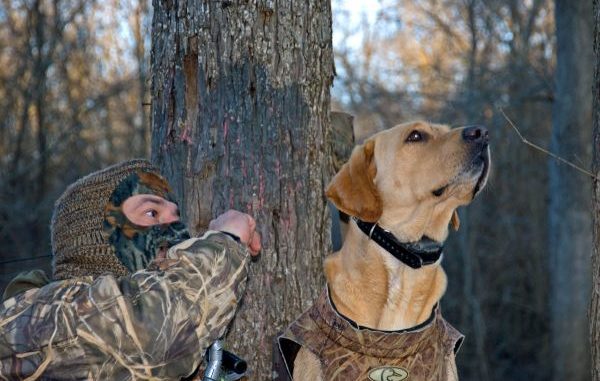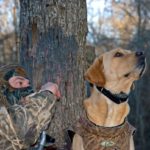
When hunters choose destinations for deer, squirrels and rabbits in Louisiana, there’s no question many head to wildlife management areas because year-in, year-out rewarding hunts on those public lands are repeated across the state.
But hunters in the know realize those public lands (and waters) offer some of the best hunting for ducks, doves, turkeys, quail, woodcock and, even, snipe in the entire state.
Talk to state Department of Wildlife and Fisheries biologists who manage and monitor those WMAs 24/7 and you realize how much of a gold mine those public lands are for those gamebirds and migratory birds.
At least one biologist said waterfowl hunting on a WMA he manages can be as good or better than anywhere else in Louisiana.
Gulf Coastal Plains Northwest biologist supervisor Jeff Johnson said Jackson Bienville is one of the gems for wood duck hunting.
“It’s convenient for locals and for a break for those who want to mix it up while coming for a week or two to deer hunt,” Johnson said. “It’s not thought of as a duck area, and for good reason — but the beaver ponds on it can provide some jam-up woodie shooting if fast pass shooting-type hunting is what someone likes.”
But, more often than not, he said, waterfowlers don’t have to go so far into the WMA.
“At J-B, there are places you can literally pull up, walk in, stand in knee-deep water, shoot a limit of ducks, go home and be at work on time,” he said.
Johnson and the other veteran state biologists touted the hunting for gamebirds and migratory birds on their respective WMAs. Here are their reports:
Johnson admitted having “limited waterfowl hunting on my WMAs.
“But where we have it, it can be good when we have a good many ducks in the area,” he said.
The top tract is Bayou Pierre WMA, which offers lottery hunts-only duck hunting.
“It’s self-guided and no frills, but it consistently has good duck hunts,” Johnson reported. “Bayou Pierre is probably our best duck hunting going (weather and water conditions permitting).
“It has limited pressure. It’s a pretty small impoundment. There is a refuge right across the bayou from it.”
But collectively they hardly can be regarded as a duck-hunting mecca.
“Keep in mind these aren’t the big Mississippi Delta WMAs, so in comparison our duck harvest may not seem like much, but they’re OK, all things considered,” Johnson said. “We don’t have nearly the amount of duck hunters, either, so success rates are still pretty good most of the time.”
How good? In 2013-14, Bodcau WMA’s duck harvest was 384 ducks, followed by Jackson Bienville WMA at 194 birds, Alexander State Forest with 177 ducks, Loggy Bayou WMA with 157, Bayou Pierre at 132 and Union WMA with 50 ducks downed.
Loggy Bayou WMA “can be good,” but prime areas are fairly small in acreage and can get plenty of pressure, so try going on weekdays, he suggested.
Indian Creek Lake on Alexander State Forest can appeal to hunters who want to give lake hunting a try.
Make no mistake about it, however: Louisiana’s WMA duck hunting is at its best most of the time on the coastal WMAs. No one knows that better than Cassidy LeJeune, who works out of the New Iberia office of LDWF.
“That’s probably the primary activity,” LeJeune said. “No doubt about it: There’s a lot of interest in duck hunting.”
The 2014-15 outlook is excellent for the top duck-hunting WMAs — Atchafalaya Delta, Pass-A-Loutre, Pointe-aux-Chenes and Salvador. But that expectation hinged on any tropical weather that might threaten the state’s coast.
Last season’s harvest tells the duck harvest tale along the coastal WMAs:
• Atchafalaya Delta WMA — 2,320 hunter efforts, 2.2 ducks per hunter effort.
• Pass A Loutre WMA — 430 hunter efforts, 3.4 ducks per hunter effort.
• Point aux Chene WMA — 2,250 hunter efforts, 1.4 ducks per hunter effort.
• Salvador WMA — 224 hunter efforts, 0.4 ducks per hunter effort.
“Overall, hunters that utilized the limited access areas on coastal WMAs had better success than hunters outside the LAAs,” LeJeune said.
Before 2014-15, habitat conditions were “in good shape” for ducks overwintering along the coast of Louisiana. Duck potato and submerged aquatic vegetation were in succulent shape, LeJeune said.
If — and that’s a big if — the winter pushes birds down, there will be food for them.
And LeJeune said waterfowl hunters in his region also often harvest coots, gallinules, mergansers and geese during the waterfowl hunting season. For example, he said, coastal WMA hunters harvested over 3,300 coots during 2013-14 bag-check days.
Just a little way up from the coast in Central Louisiana, Mississippi Alluvial Valley South Region Manager Tony Vidrine said Richard K. Yancey WMA,, Sherburne WMA Spring Bayou WMA and Grassy Lake WMA are perennially the most productive duck-hunting areas in his region.
In 2013-14, Richard K. Yancey’s harvest was over 1,700 ducks, including the teal season. That was followed by Sherburne WMA with over 1,300 ducks.
The latter has lottery duck-hunting opportunities on the South Farm, which offers a controlled, quality hunt, Vidrine said.
“Yancey? They did good there, also,” Vidrine said. “The area’s so big and there are so many different types of habitat you can do pretty good, as far as duck hunting goes.”
He said areas of particular interest include swampy areas, pits along the river, backwater areas — particularly the Yakey Tract, an area flooded intentionally.
In the same region, LDWF’s Cliff Dailey was enthused about the duck-hunting outlook this season but really looking forward to next season when an expansive waterfowl-management project on the north end should be completed on Dewey Wills WMA.
Ridges that are part of the project also will provide good deer habitat.
As it is, Dewey Wills WMA offers fair to good duck hunting on the greentree reservoir on the southern end, Dailey said.
Numerous potholes are maintained that provide quality access to waterfowl. Some of the top areas historically have been along Muddy Bayou, Taylor Bayou and Beaver Slough.
Mallards, gadwall, wood ducks and the occasional teal are frequent visitors when conditions are right.
To the east, in the Gulf Coastal Plain Eastern Region, Christian Winslow touts the duck hunting on Pearl River, Joyce and Manchac WMAs, all of which “are typically the best in terms of waterfowl harvest.”
Habitat conditions looked promising on those areas as of the third week of July.
Winslow noted that a concerted effort is underway to control giant salvinia on Manchac WMA, which is the most popular duck-hunting area. The invasive, exotic plant was discovered last year, he said.
“Users of Manchac WMA are advised to make sure their boats, trailers and other equipment are thoroughly cleaned and free of this vegetation to help prevent its spread to other areas,” he reported. “We want to keep the area open for overwintering waterfowl. We want to control that giant salvinia. It’s really expanded this growing season.”
Winslow said weevils have been released in select locations, while herbicides have been used in others.
The Prairie usually is the duck-hunting hotspot on Manchac WMA.
“The whole area’s got good waterfowl hunting, but most people focus on The Prairie,” Winslow said.In the upper reaches of the Sportsman’s Paradise, one of the most-popular areas is on Boeuf WMA, according to MAV North Region’s Lowrey Moak.
How productive is it? In 2013-14, more than 2,410 waterfowlers harvested 3,469 ducks.
“Boeuf is heavily hunted by local hunters and hunters from all over the South …,” Moak said. “During the season, normally, if the water level’s at just the right spot there’s probably no better spot to hunt ducks. All the conditions have to be right.”
Moak noted duck hunters can hunt open land, shallow water and timber.
“You can spread out and hunt. That’s what makes it what it is; we offer it all,” he said.
Boeuf WMA hotspots include the greentree area in the interior, the Topan Tract north of Highway 4 and the Crow Field on the lower part of the WMA, Moak said.
Some awesome duck hunting can be had in the MAV North-Monroe Region, namely at Bayou Macon, Ouachita and the sprawling Russell Sage WMAs.
No one knows that better than Charlie Booth, the veteran LDWF biologist who said “all three WMAs provide good waterfowl-hunting opportunities.”
At Bayou Macon last season, 312 duck-hunting efforts resulted in 171 ducks in a 100-acre area south of Shrock Road that is flooded each year before the waterfowl hunting season.
On Ouachita WMA, 1,396 ducks were harvested by 1,518 waterfowlers.
And it gets even better than that. Take 2013-14, for example, when 1,551 waterfowl hunting efforts accounted for 4,248 ducks in the Wham Brake area on the northern part of Russell Sage WMA.
Duck hunters also heated their shotgun barrels on the west greentree reservoir located south of Interstate 20 off the main road, where 2,053 duck hunting efforts recorded a harvest of 2,367 ducks.
The best bet for killing ducks on the Gulf Coastal Plain South Region’s WMAs is to “jump a few wood ducks,” LDWF’s Wendell Smith said.
Smith manages Clear Creek, West Bay, Fort Polk and Peason Ridge WMAs.





